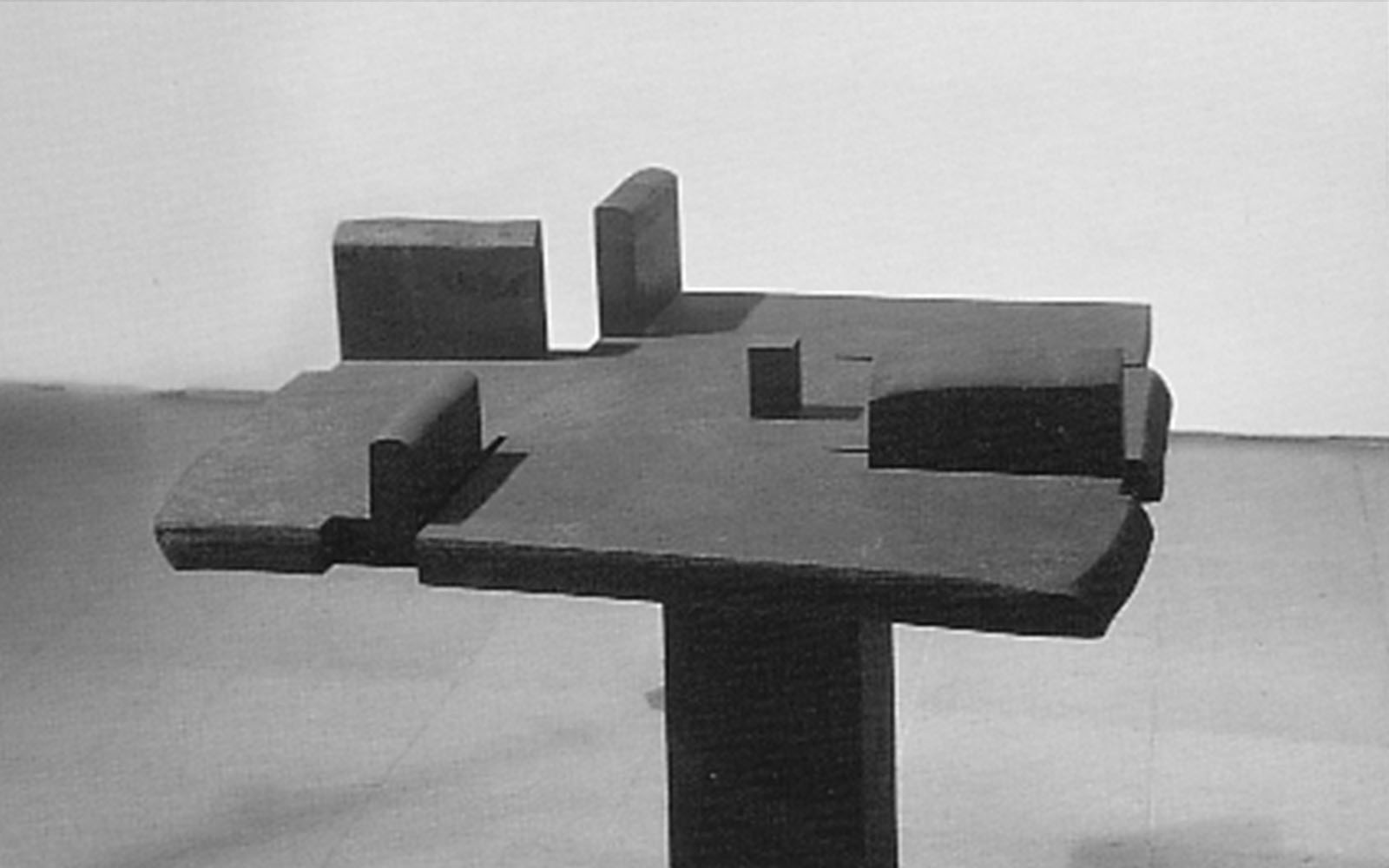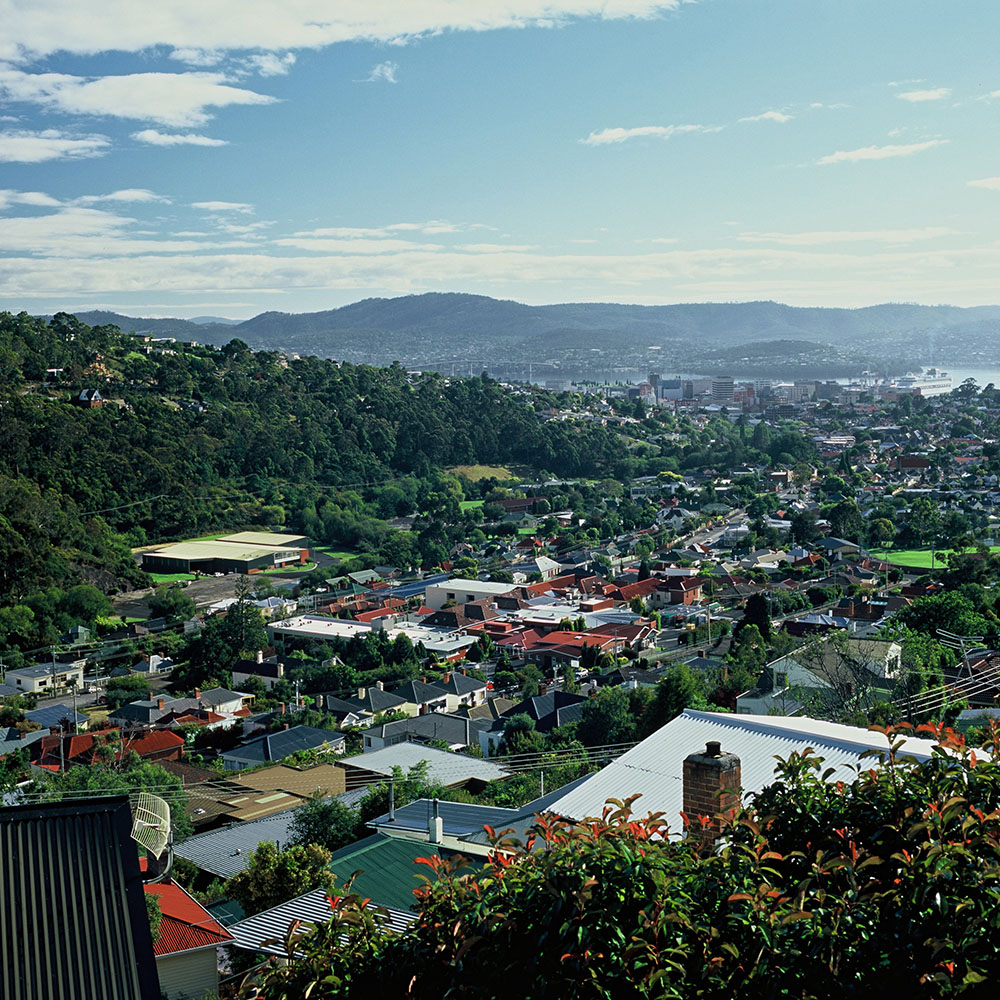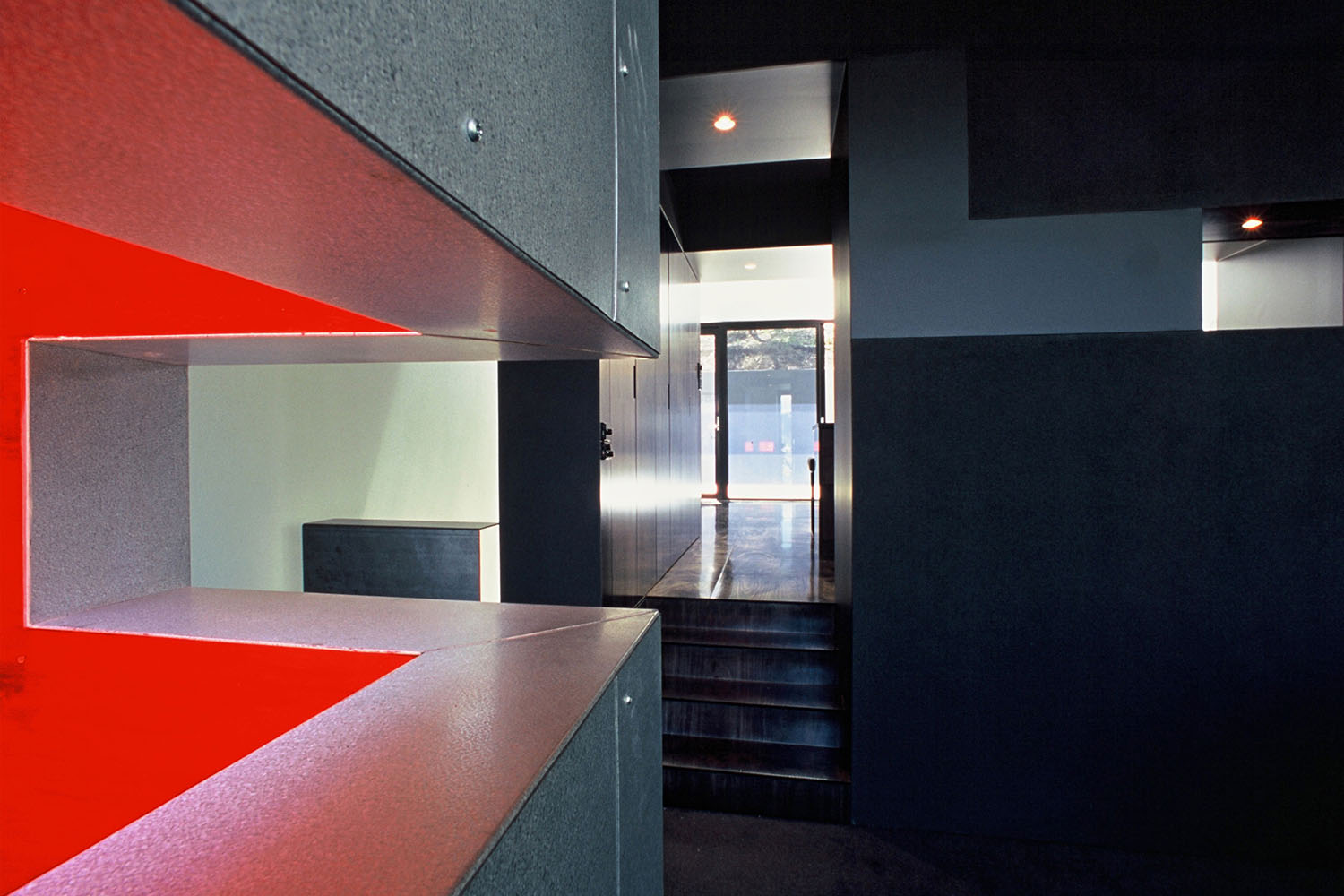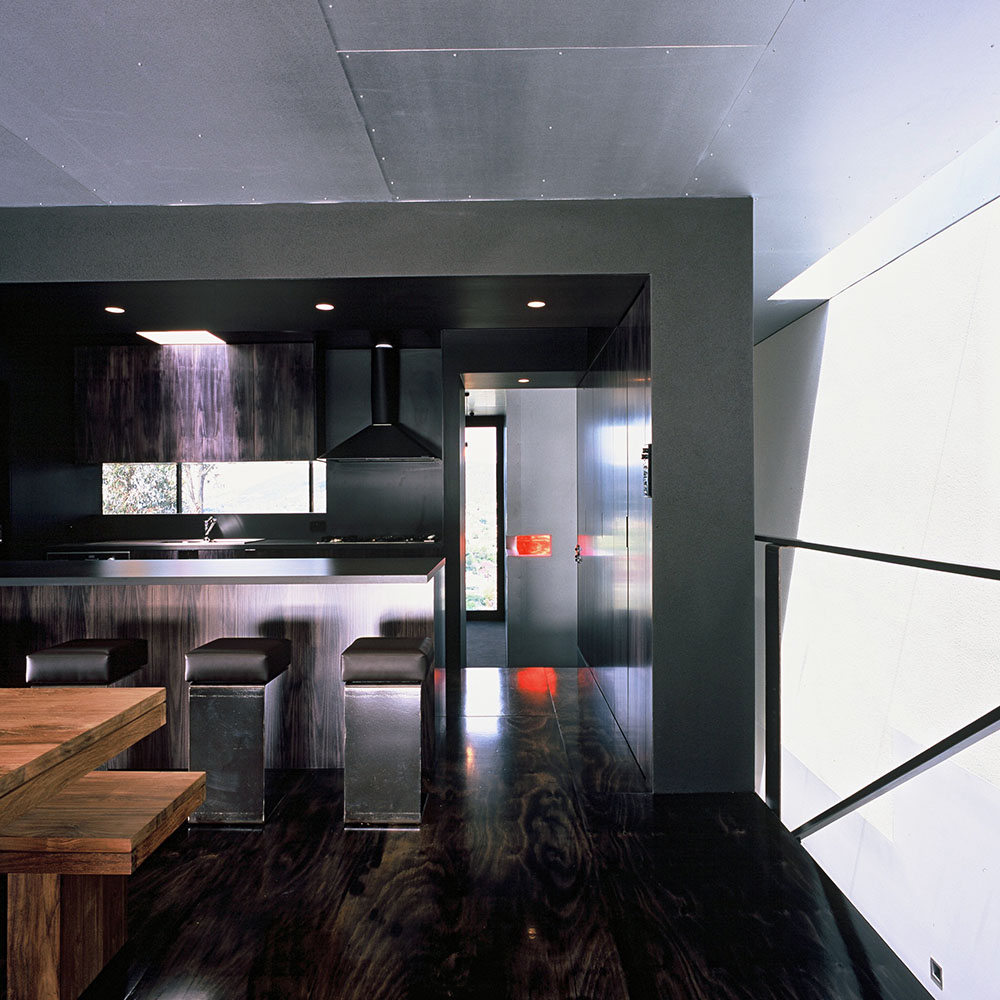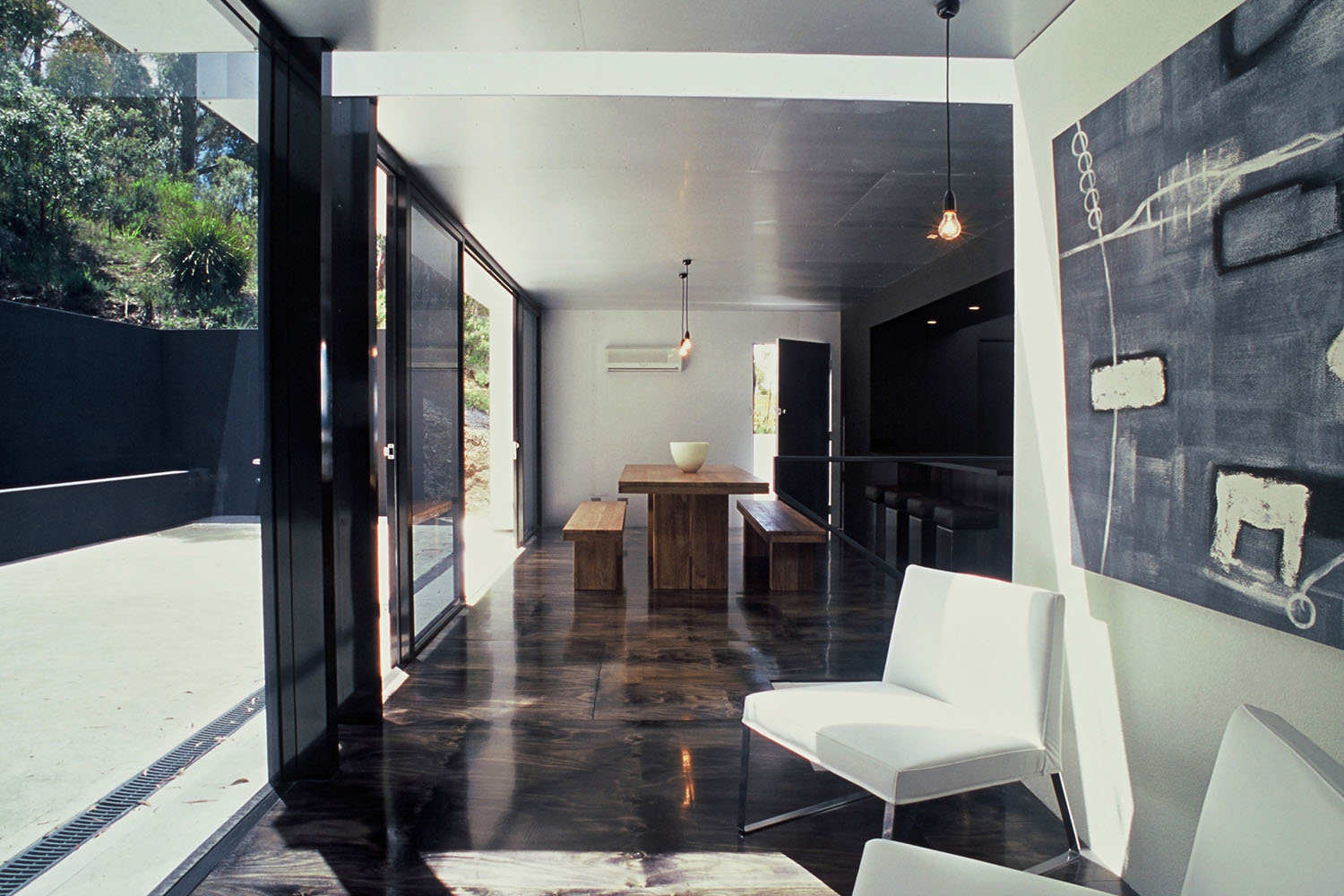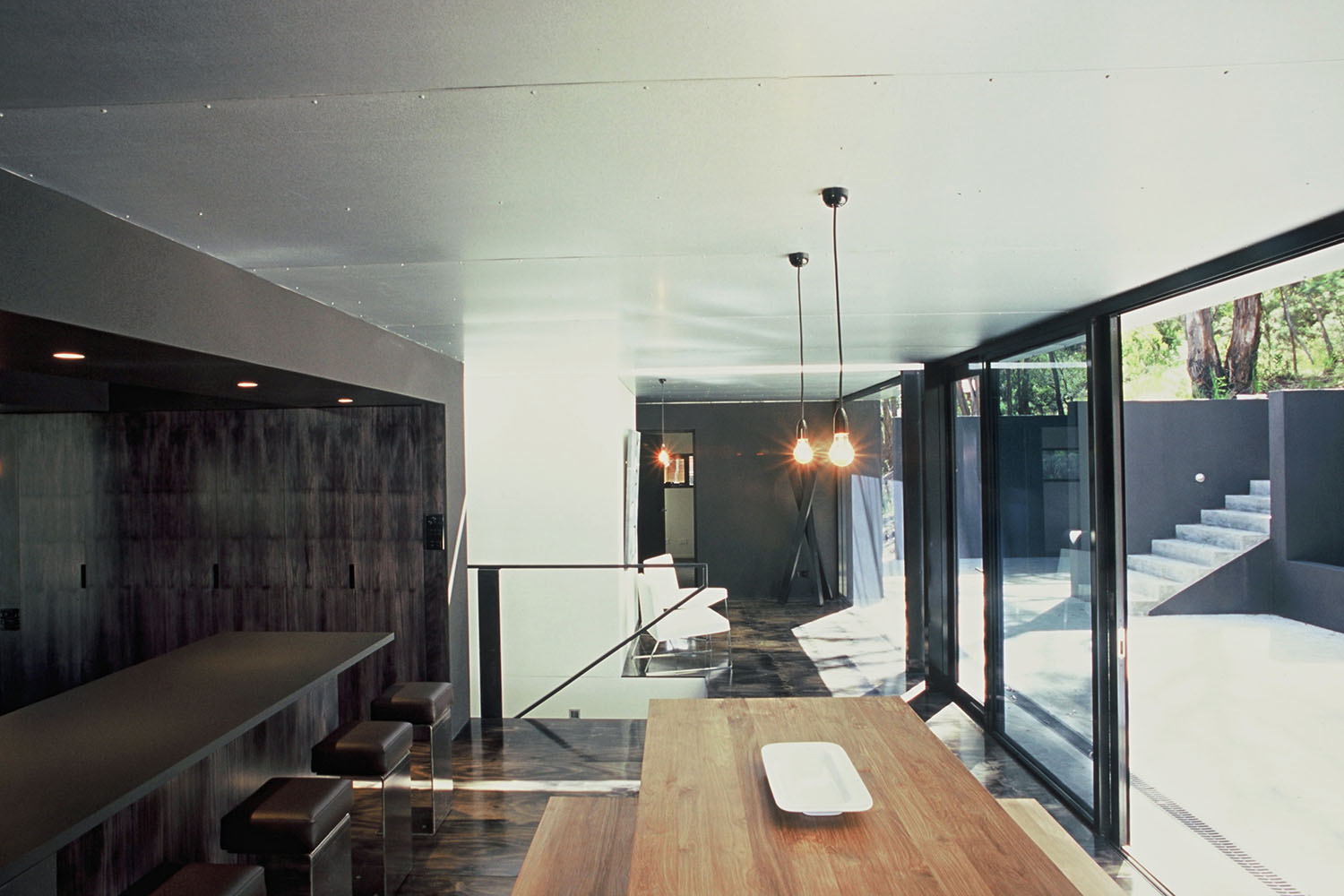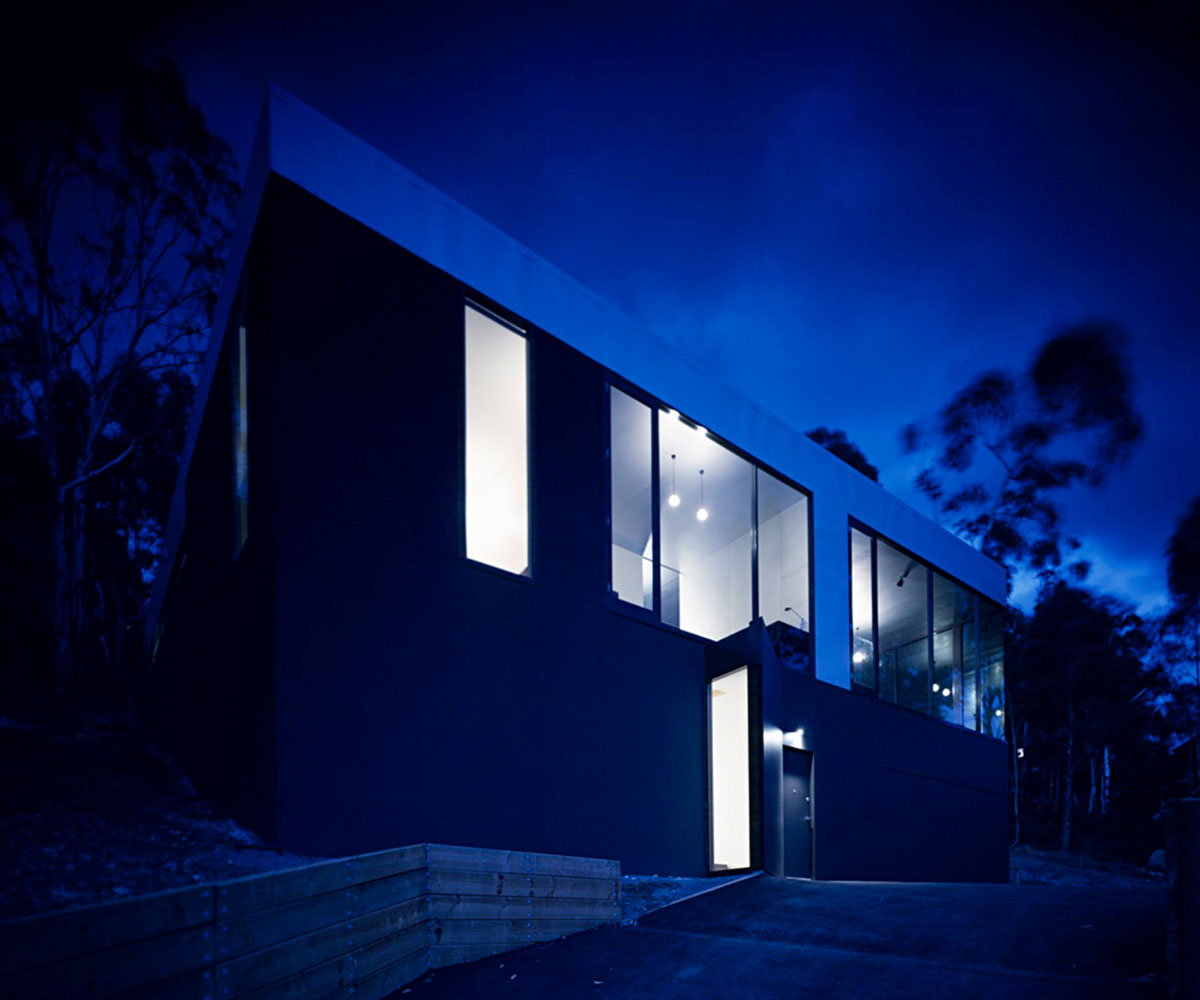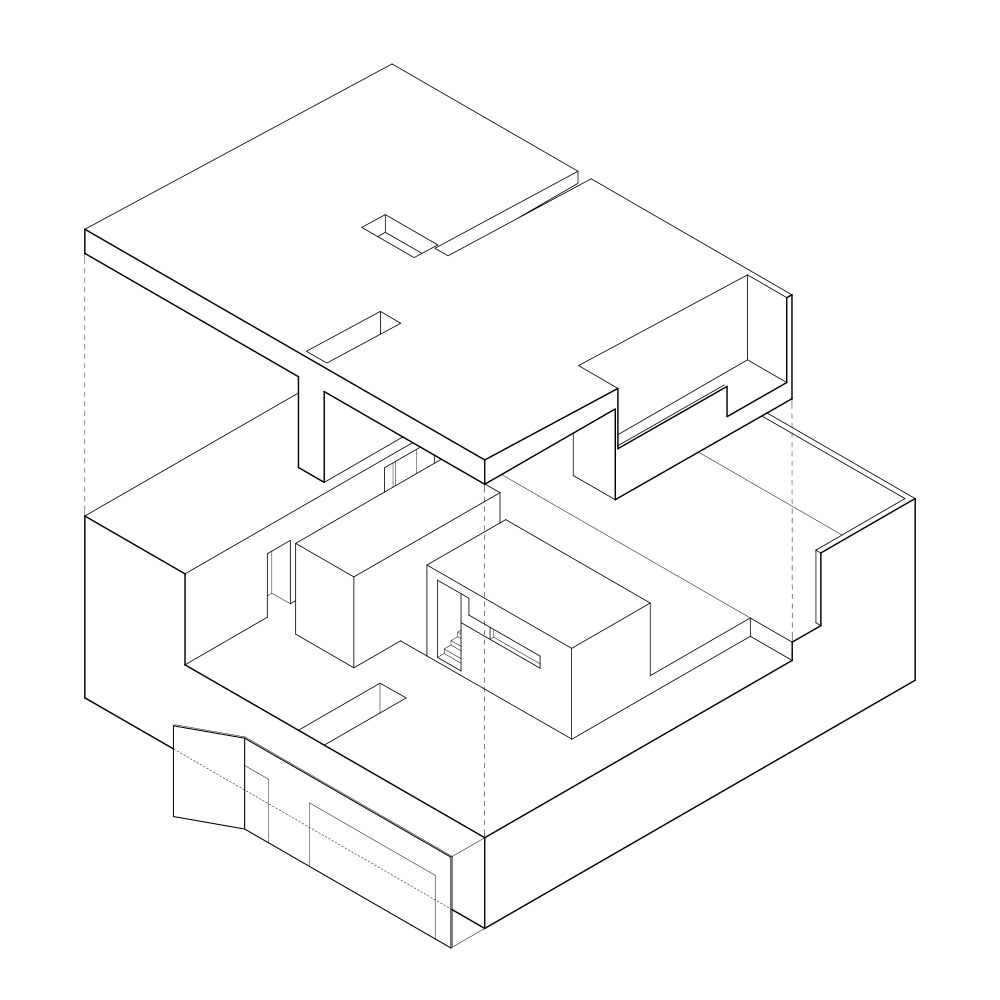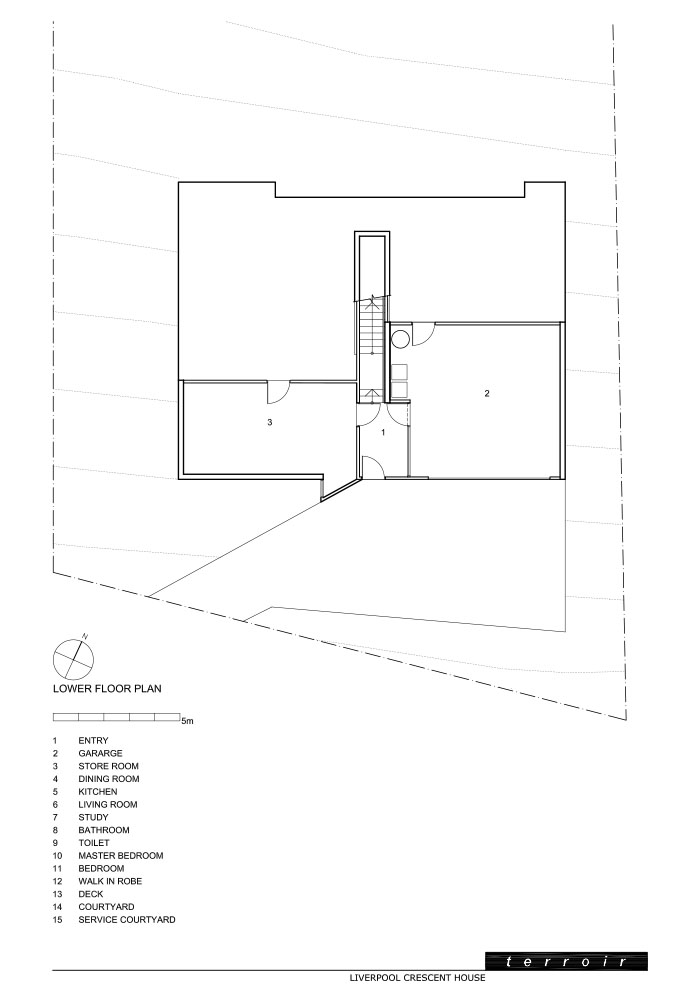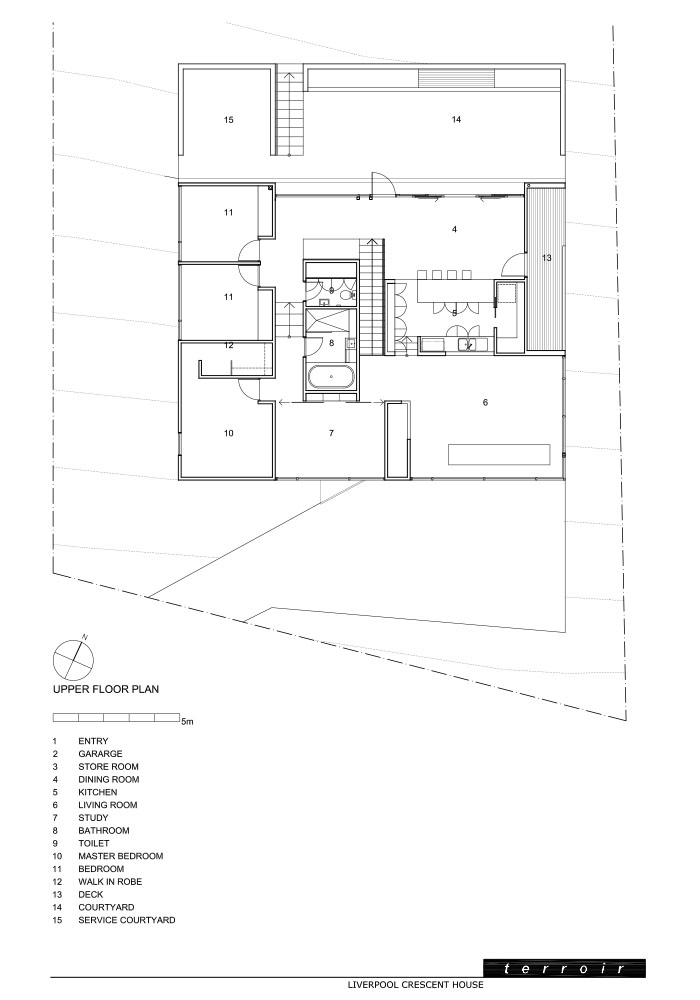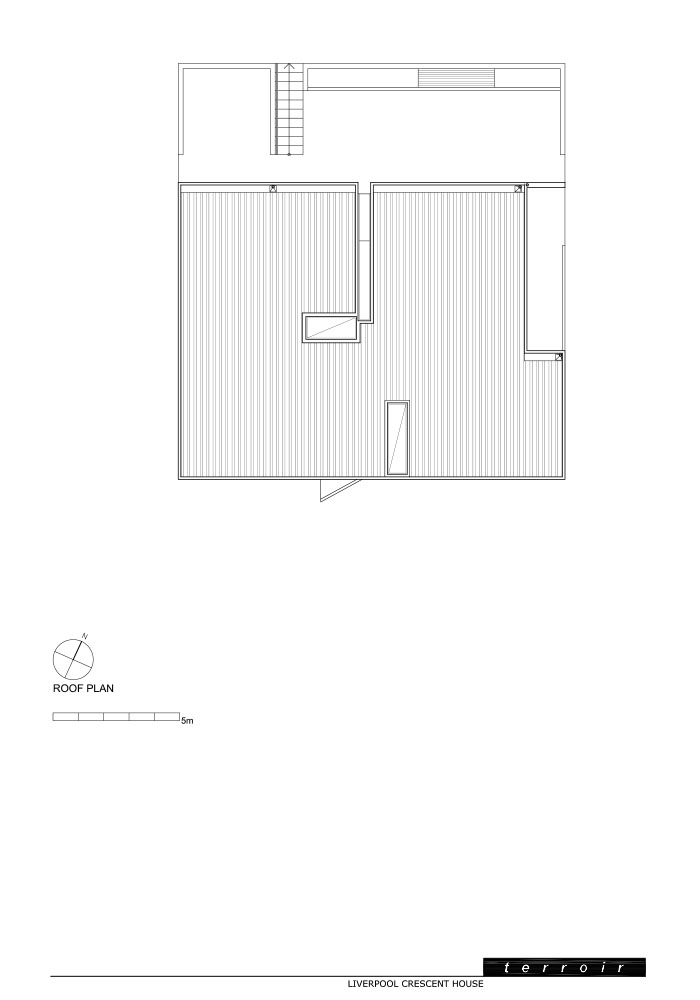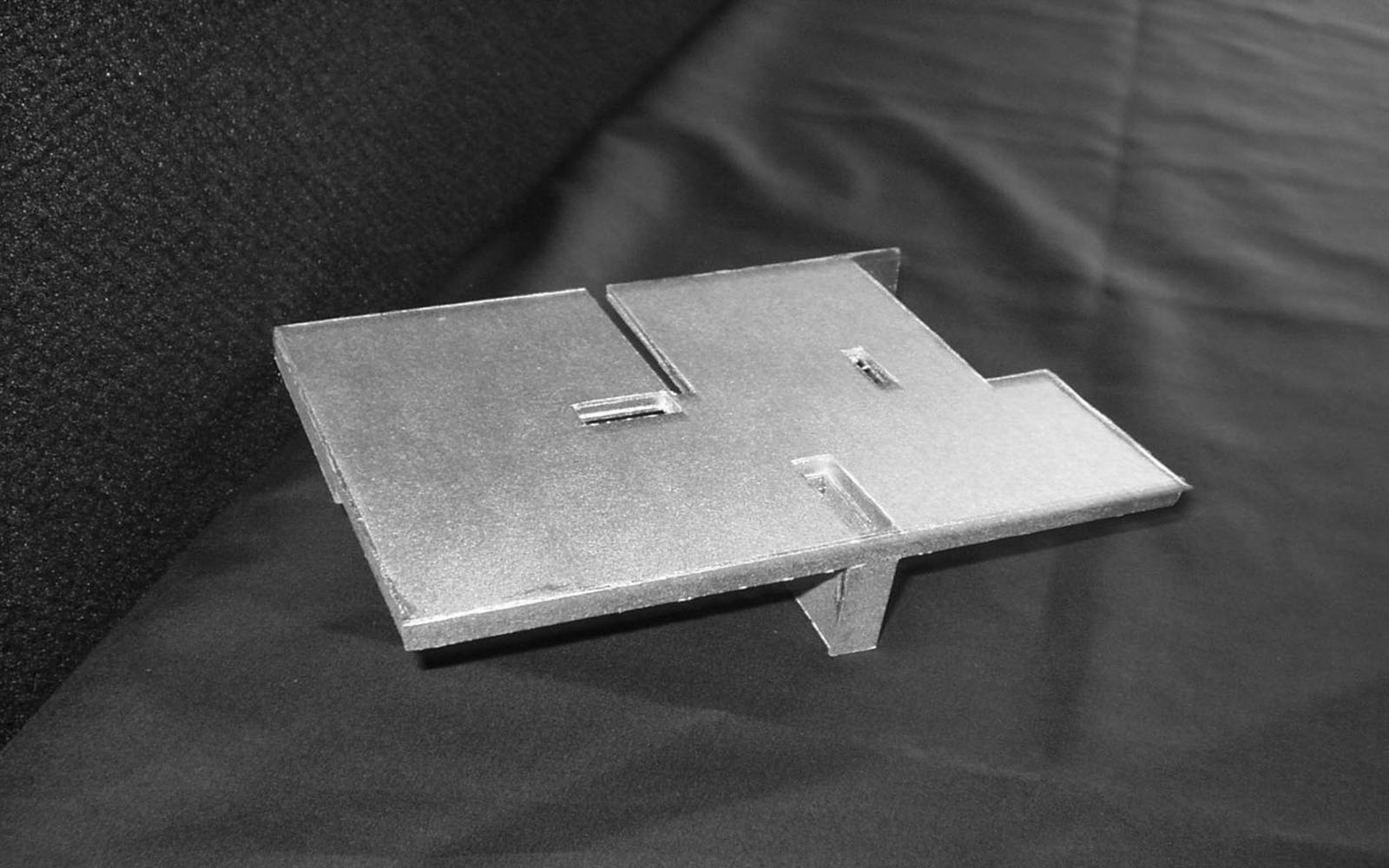-
Living abstraction
Liverpool Crescent House
This house is sited at the edge of a small pocket of bushland that sits in close proximity to the centre of Hobart. The house was conceived as a habitable sculpture whose abstraction provided a way of addressing a powerful landscape with limited means.
At first the building appears as a blunt cube with no visible signs of habitation or domesticity – an uncanny object which responds to the power of the landscape with a restrained formal language. This restraint is carried through in the limited materials palette and colour selections that further dematerialises the house. This external brevity is contrasted with a surprisingly rich and intimate interior. Public spaces of this interior are “carved” from the blunt cube, resulting in a series of spaces that have differing relations to the world beyond, while more private functions – toilet, bathroom, bedroom etc – occupy the solid elements remaining after the more public spaces are carved out.
Key interior spaces are rendered in the materials palette used externally, resulting in profound spatial implications given the tension between the inner and outer layer. This tension between the inner and outer is played out in a range of complex spatial maneuvers as the external skin is bought into and sometimes passes entirely through the interior section of the house to distribute light to lower levels.
- TYPE Housing
- LOCATION Hobart | AU
- YEAR 2007
- PHOTOGRAPHY

